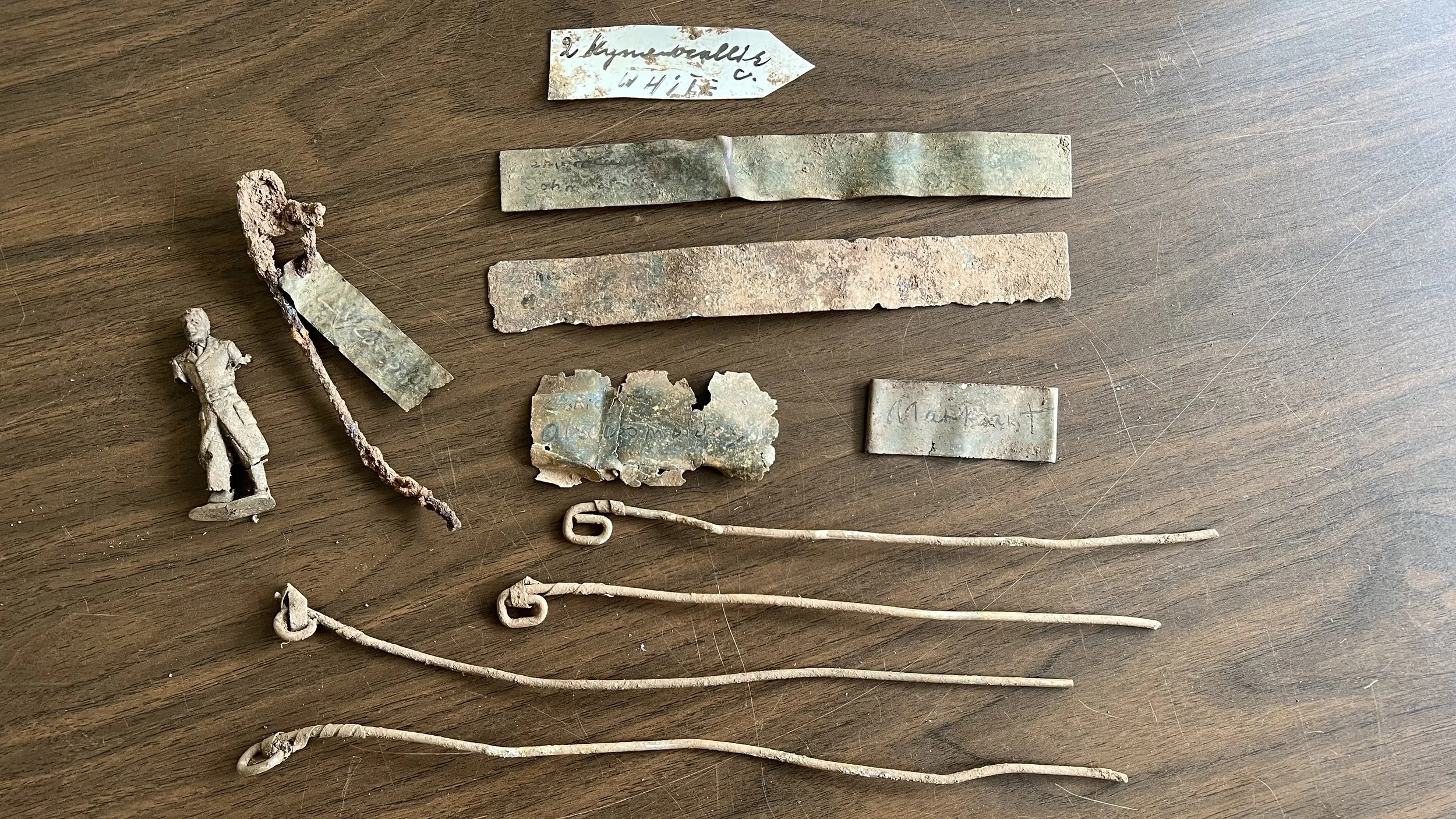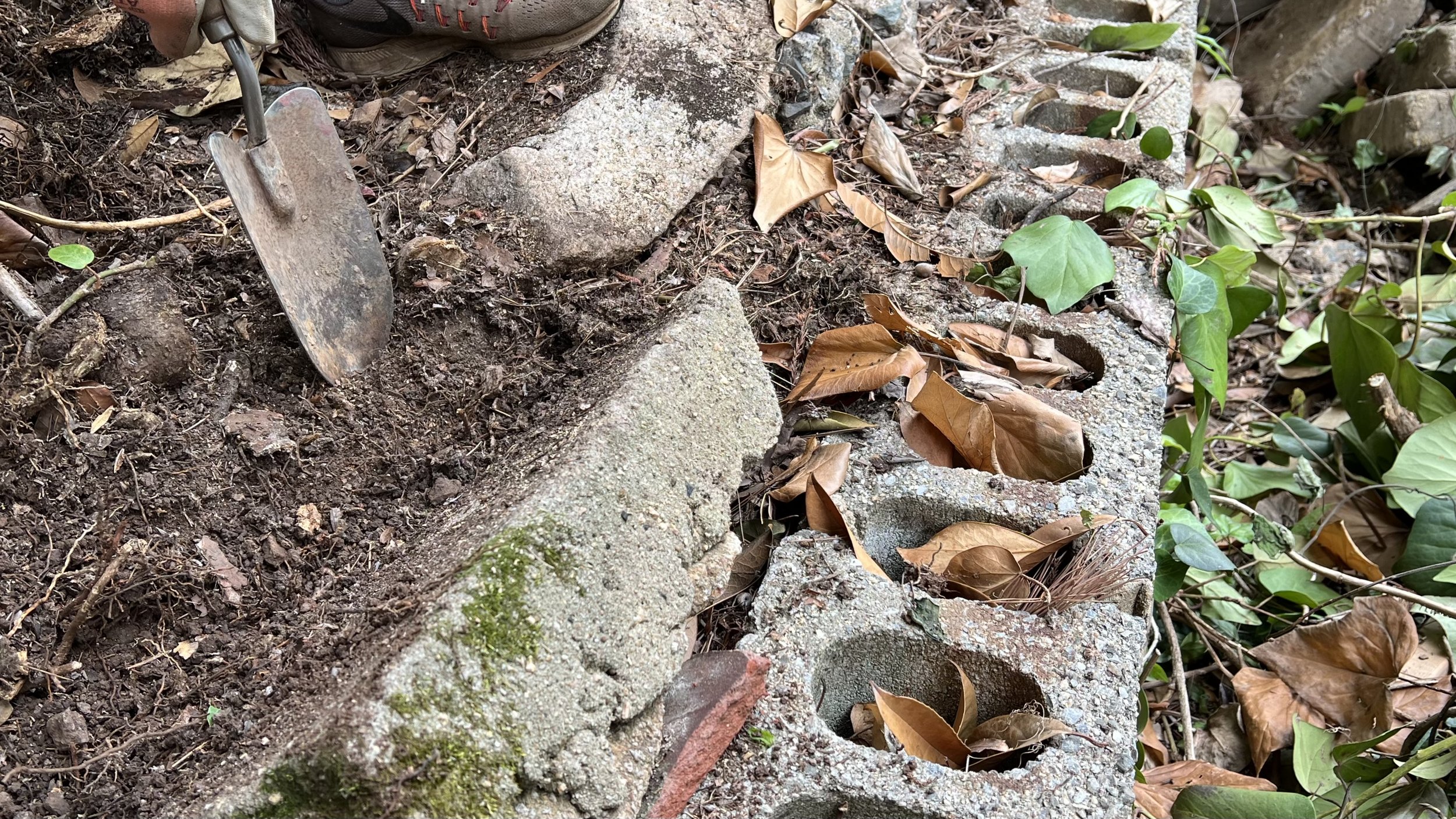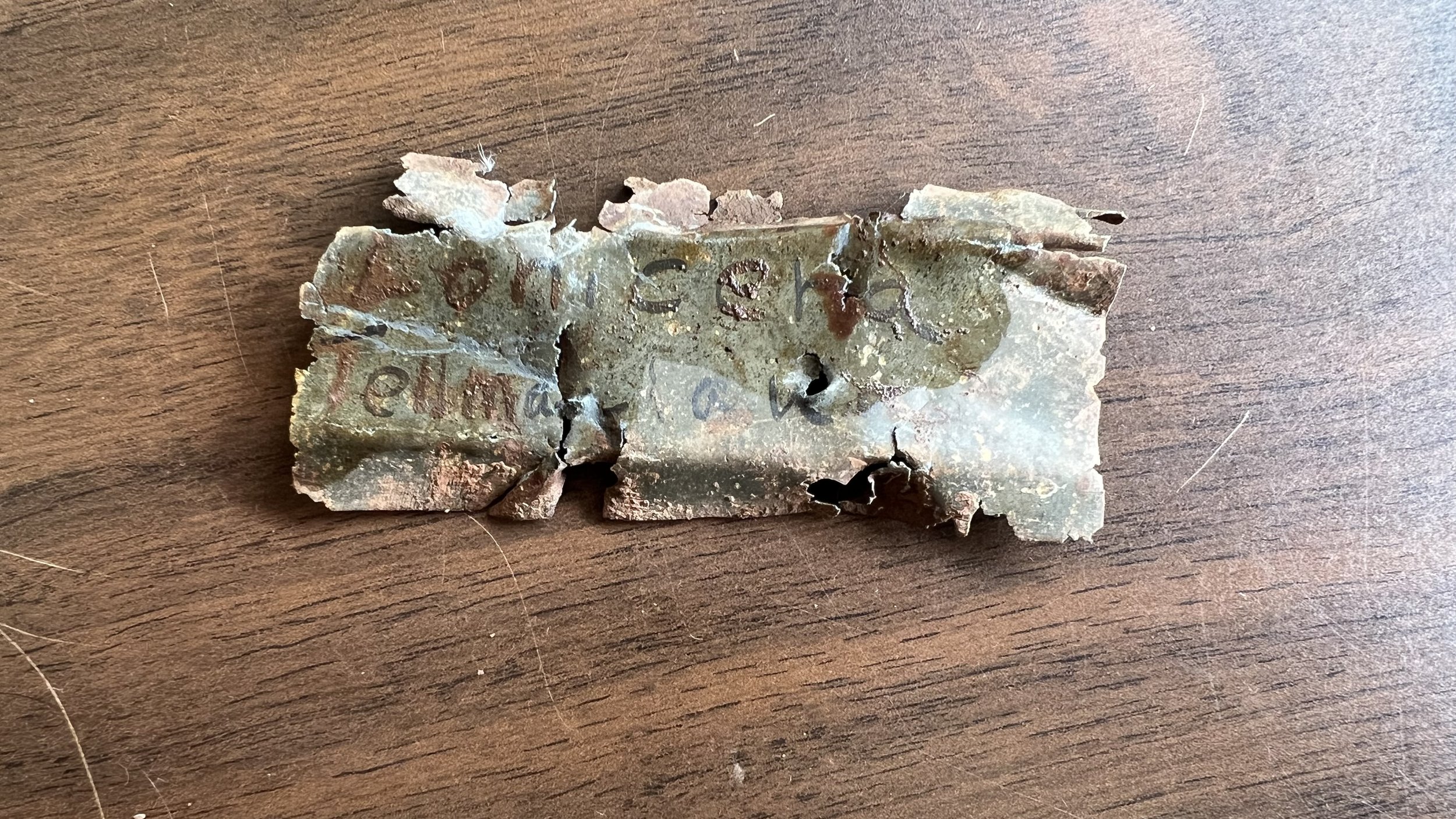Two weeks ago, volunteers and I dismantled the rotting wooden privacy fence along the west side of the Elizabeth Lawrence House & Garden, to make way for new fencing to be installed this week. Doing the demolition in-house gave me the opportunity to get out the metal detectors (thanks, Ellen & Bill Archer!), and spend some quality time combing the property line for any original plant tags. I hoped I might find a few. I never thought I’d find many more than that, and I certainly didn’t think I’d discover information that would gently challenge the overall picture I’ve built in my mind of how Elizabeth Lawrence originally planted the edges of her property.
We don’t have many historic images—especially not of the property edge plantings. This one shows the lowest landing near the back of the house, with vine-covered wire fencing topped with woven wood slats, with a seedling of Macleaya cordata (plume poppy) standing tall. Trees, shrubs and ground covers seem to dominate the plantings otherwise. Photo courtesy the Charlotte Observer Collection at the Robinson-Spangler Carolina Room, Charlotte-Mecklenburg Public Library.
Bee-boop. Beeee-boop. Booooooop. These are the odd sounds that send a bolt of excitement through my veins, when the metal detector “sees” something promising beneath the soil. The lower and longer the “boooop,” the more solid the find. Many times it’s a rusty nail or screw, or a section of wire.
After we removed the old fence, I was finally able to really see the western edge of the garden. I began to imagine what it must have looked like when Elizabeth lived and gardened here. Along roughly half of the 225’ long property line, an original block retaining wall remains—leaning out, yet rock solid. On top of and behind that retaining wall are layers upon layers of rocks and urbanite (busted up old sidewalk pieces).
Who knew? Urbanite and rocks line the original retaining wall.
Of COURSE! This entire exposure would have been perfect for a rock garden! As volunteers and I worked to unearth the remaining edge of the property not marked by the retaining wall, we found more rocks and urbanite. This system of retaining soil is built (buried) along nearly the entire edge. And nestled in between those rocky layers? A treasure trove of plant tag stakes and plant tags… and valuable information that I would never know otherwise.
I dig this! This tag is for Lonicera tellmanniana, a hybrid honeysuckle that Elizabeth Lawrence planted “near the telephone pole” in the fall of 1950.
I was shocked to find a tag for Hemerocallis ‘John Blaser’. I knew Elizabeth grew this daylily in Raleigh, but I did not know she brought it with her to Charlotte. Another daylily tag is for Hemerocallis ‘Fidelity’, which I thought was originally planted in one of the sunny borders. I don’t think of daylilies as suitable for the rock garden, so maybe my initial theory of how this area was originally planted isn’t quite right.
There are tags for two different types of Lonicera (honeysuckle). This is not surprising at all; I know she planted the wire fence with several types of vines to create a green screen. Tags for four different types of bulbs—Lycoris, Narcissus ‘Markant’, Amaryllis ambigua and Hymenocallis—are a bit interesting, though.
One day’s haul. Plant tag stakes and plant tags, and, yes, that is an old action figure from the mid 20th century… probably one of Elizabeth’s nephew’s toys. I wonder if he wants it back?
Even after twelve and a half years, these surprise discoveries still thrill me to the core. I can’t wait to see what I’ll dig up and learn next!





